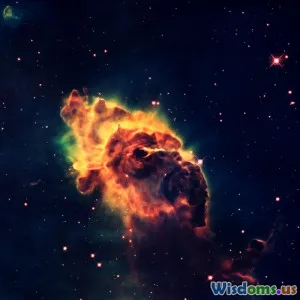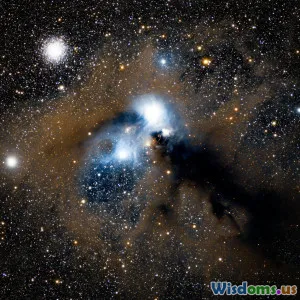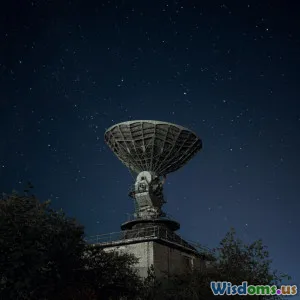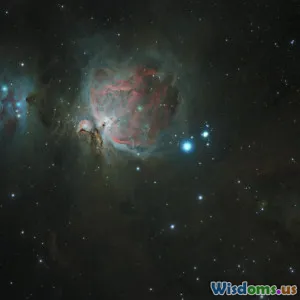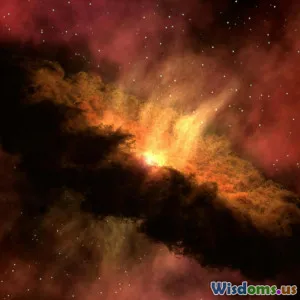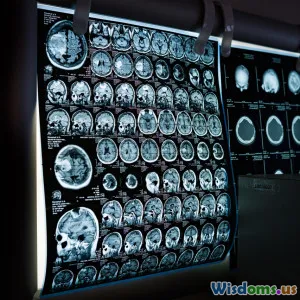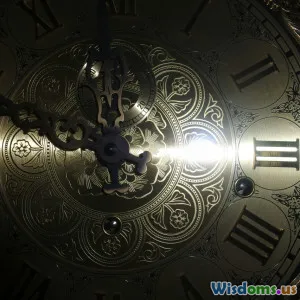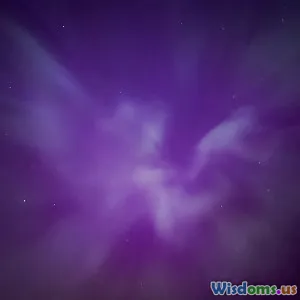
Nebulae: The Hidden Star Factories
9 min read Explore how nebulae serve as cosmic nurseries, crafting stars and shaping our universe. (0 Reviews)
Nebulae: The Hidden Star Factories
Space holds many wonders, but few are as captivating or essential as nebulae—vast cosmic clouds brimming with possibility. These sprawling regions comprise gas and dust that quietly craft new stars, acting as the universe’s hidden star factories. Despite their ethereal beauty observable even through amateur telescopes, nebulae harbor tumultuous processes critical to cosmic evolution.
In this in-depth exploration, we’ll unravel the secrets of nebulae: from their types and formation to their vital role in creating the stars that illuminate our skies. Prepare to embark on a celestial journey through space’s most remarkable stellar nurseries.
What Are Nebulae?
A nebula (plural: nebulae) is a massive cloud of dust, hydrogen, helium, and other ionized gases floating in galaxies. While visually stunning, their importance extends far beyond appearance—they are the cradles where new stars are born.
Nebulae exist in various forms throughout the cosmos. These clouds can span light-years and contain sufficient mass to create thousands of stars over millions of years. For example, the Orion Nebula, one of the most studied, is around 1,500 light-years from Earth and roughly 24 light-years across—an active star-forming region visible with the naked eye.
The word "nebula" comes from the Latin term for "cloud" or "fog," fitting given their diffuse and mysterious appearances.
Types of Nebulae
Emission Nebulae
These nebulae glow with vibrant colors, primarily red or pink, due to ionized hydrogen gas. Ultraviolet light from young, hot stars excites the hydrogen atoms, causing them to emit light. The Orion Nebula (Messier 42) is a classic emission nebula, serving as a stellar nursery bustling with infant stars.
Reflection Nebulae
Unlike emission nebulae, reflection nebulae don't emit their own light. Instead, they shine by reflecting the light from nearby stars. These appear blue because blue light scatters more efficiently than other wavelengths—a phenomenon familiar on Earth in our blue sky. The Pleiades star cluster, also known as the Seven Sisters, contains notable reflection nebulae.
Dark Nebulae
Rather than glowing, dark nebulae are dense clouds of dust that block light from stars behind them, appearing as black voids against the brighter background. An iconic example is the Horsehead Nebula in the constellation Orion, which appears as a dark silhouette shaped remarkably like a horse’s head.
Planetary Nebulae
Despite the name, planetary nebulae don’t form planets. Instead, they represent an older stage in a star’s lifecycle, created when dying stars expel their outer layers. These shells of ionized gas shimmer as they are energized by the remaining core. The Ring Nebula (M57) typifies such a formation.
How Nebulae Form Stars: The Process of Star Birth
Nebulae are not static clouds; they are dynamic star factories where gravity warps and collapses gas and dust to create new suns.
Gravitational Collapse
Areas of increased density within molecular clouds (often termed giant molecular clouds) can begin collapsing under their gravity. External forces like nearby supernova explosions or galactic collisions can compress these clouds further, triggering star formation.
Protostars and Accretion
As collapse proceeds, the densest regions form protostars enveloped by spinning disks of gas and dust. Over hundreds of thousands of years, these disks funnel material onto the protostar, gradually increasing its mass and temperature.
Ignition of Nuclear Fusion
When the core temperature reaches approximately 10 million Kelvin, hydrogen fusion ignites, transforming the protostar into a true star. This marks the end of the star's formation phase and the beginning of its life on the main sequence—the longest stage of stellar existence.
Feedback Effects
Young stars emit stellar winds and intense radiation that can blow away remaining gas, halting further star formation locally but sometimes triggering it nearby by compressing other gas pockets.
The Role of Nebulae in Galactic Evolution
Nebulae are more than birthplace nurseries; they regulate star populations, influence galactic chemistry, and help recycle material.
-
Stellar Recycling: Mass lost from dying stars replenishes nebulae with heavier elements (carbon, oxygen, iron) vital for forming rocky planets and life-building molecules.
-
Star Formation Regulation: Nebulae control the pace of star formation, balancing creation and destruction, thereby affecting the evolution of galaxies.
-
Galactic Ecology: By transferring energy and matter through star formation and death cycles, nebulae maintain galactic structure and diversity.
Real-World Examples and Discoveries
The Orion Nebula
Researchers have discovered hundreds of young stars within this nebula using Hubble Space Telescope data. It serves as a natural laboratory for understanding star formation physics.
The Eagle Nebula's Pillars of Creation
These sculpted columns of gas were famously captured by Hubble, showing the intense shaping effects of stellar winds on nebular material. They illustrate star formation within dense regions of gas and dust.
Insights from ALMA
The Atacama Large Millimeter/submillimeter Array (ALMA) allows astronomers to see early star formation stages within dark nebulae by penetrating dense gas and dust—offering unprecedented detail into the hidden star factories.
Quotes from Experts
“Nebulae are the genesis sites of stars, encapsulating the paradox of the universe: destruction leads to creation.” — Dr. Melissa Gainor, Planetary Society Executive Director.
“By studying nebulae, we not only understand star formation but also glimpse the origins of our own solar system.” — Dr. Lee Anne Willson, Astrophysicist.
Conclusion: Why Nebulae Matter to Us
Nebulae bridge the cosmic past with the present and future. Through them, we comprehend how stars—and by extension, planets and life—come into existence. Every atom in our bodies was once part of a nebula, forged in the heart of a star birthed within these stellar clouds.
Next time you gaze at the night sky, remember that the dazzling pinpoints of light owe their origins to the hidden star factories of nebulae, cosmic wombs quietly orchestrating the birth of myriad suns.
Our continuous study of nebulae not only enriches astronomy but deepens our understanding of our place in the universe. With advancing technologies like space telescopes and interferometers, the secrets of these enchanting star factories are becoming ever more accessible, harboring answers to fundamental cosmic questions.
Let the nebulae inspire you—reminders that even in vast emptiness lie vibrant engines of creation.
Rate the Post
User Reviews
Popular Posts










